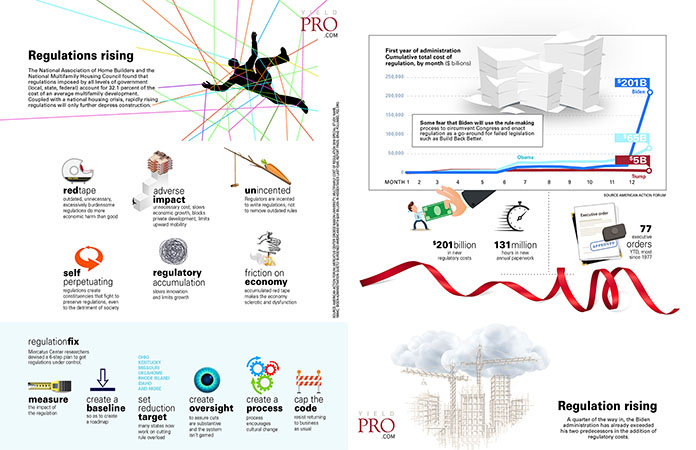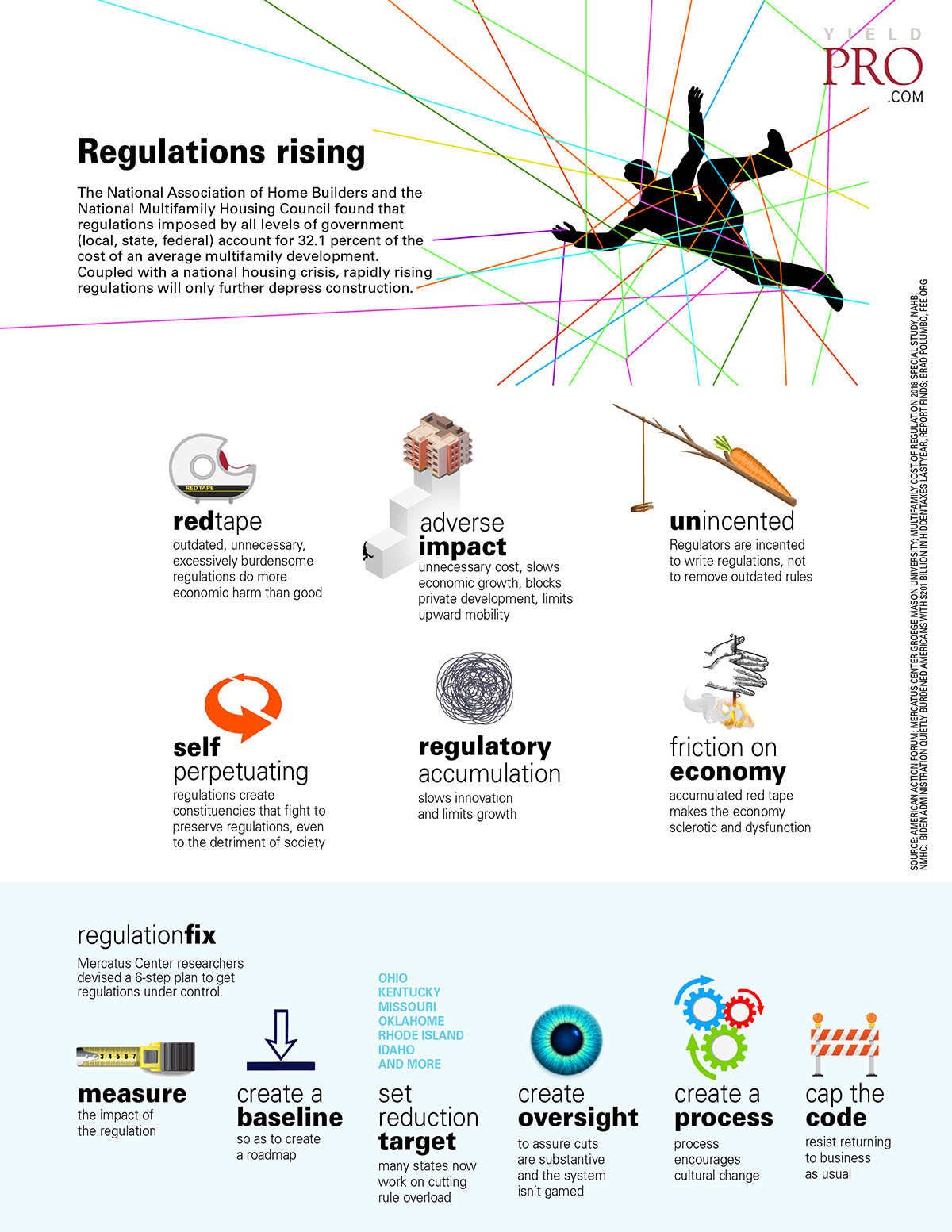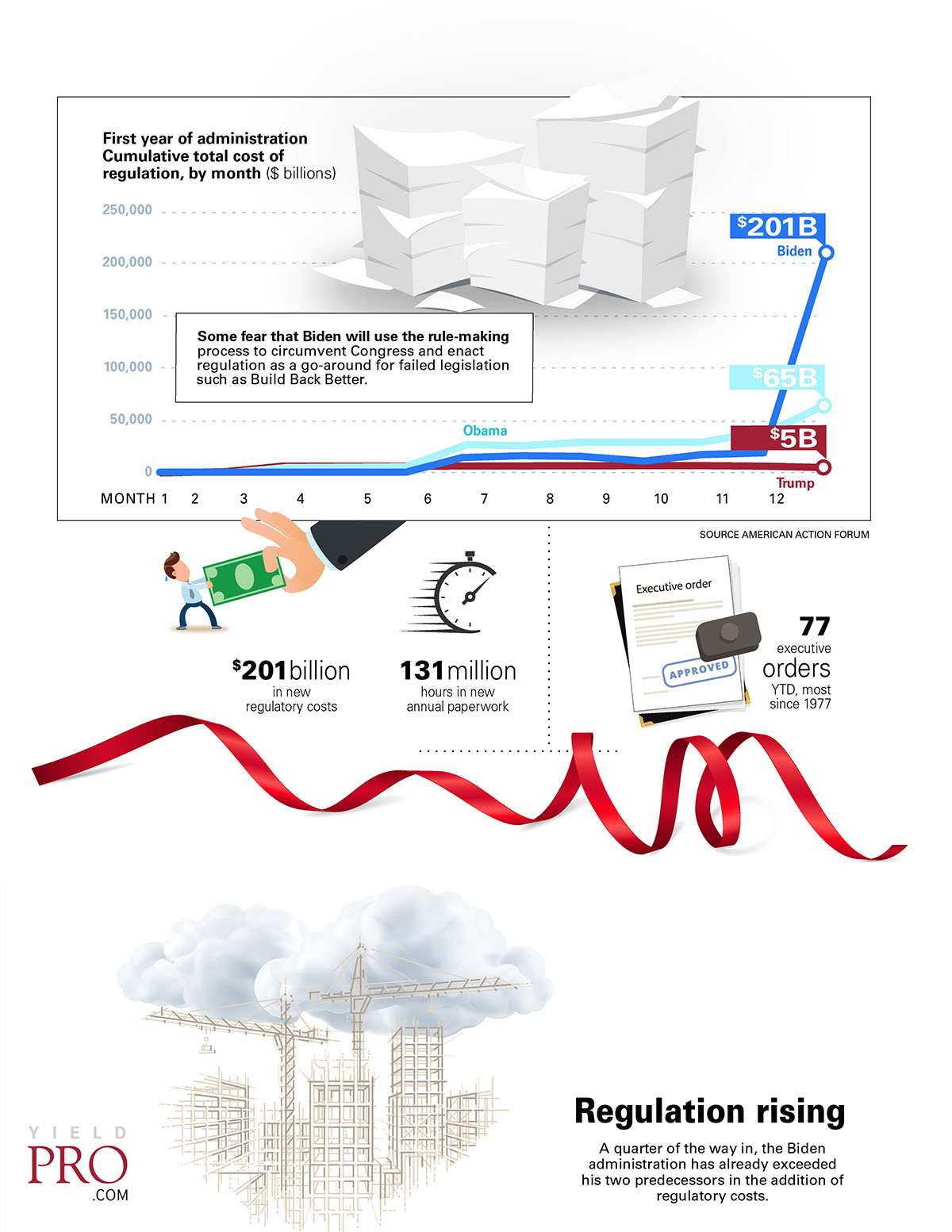The National Association of Home Builders and the National Multifamily Housing Council found that regulations imposed by all levels of government (local, state, federal) account for 32.1 percent of the cost of an average multifamily development. Coupled with a national housing crisis, rapidly rising regulations will only further depress construction.
Redtape
Outdated, unnecessary, excessively burdensome regulations do more economic harm than good
Adverse impact
Unnecessary cost, slows economic growth, blocks private development, limits upward mobility
Unincented
Regulators are incented to write regulations, not to remove outdated rules
Self-perpetuating
Regulations create constituencies that fight to preserve regulations, even to the detriment of society
Regulatory accumulation
Slows innovation and limits growth
Friction on economy
Accumulated red tape makes the economy sclerotic and dysfunction
Regulation fix
Mercatus Center researchers devised a 6-step plan to get regulations under control.
- Measure the impact of the regulation
- create a baseline so as to create a roadmap
- set reduction target many states now work on cutting rule overload
- create oversight to assure cuts are substantive and the system isn’t gamed
- create a process that encourages cultural change
- cap the code. resist returning to business as usual
Some fear that Biden will use the rule-making process to circumvent Congress and enact regulation as a go-around for failed legislation such as Build Back Better.
- $201 billion in new regulatory costs
- 131 million hours in new annual paperwork
- 77 executive orders YTD, most since 1977
Regulation rising
A quarter of the way in, the Biden administration has already exceeded his two predecessors in the addition of regulatory costs.

















